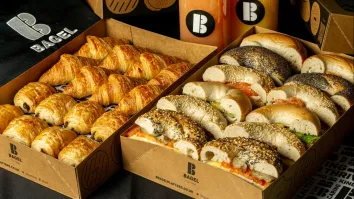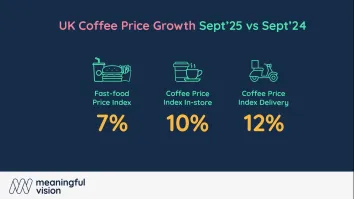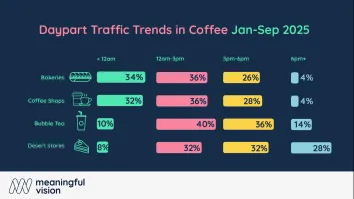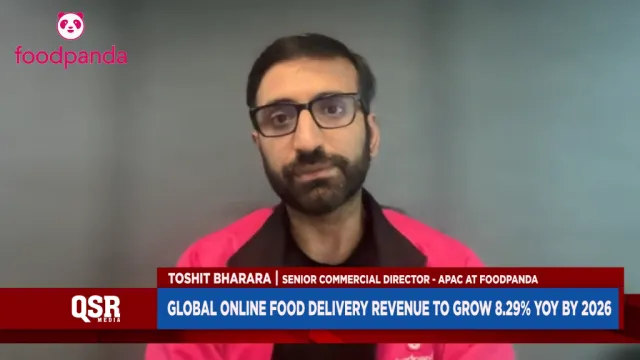Key Performance indicators for Quick Service Restaurants
By Paul SharpeHow do you know if you're doing well?
Running a multi-location or franchise quick-service restaurant business is hard. There is no denying it. The end goal is growth, profit, success, and an excellent reputation, but how does a business owner know if they are heading in the right direction? If one area of the business is performing well, it could be hiding the fact that other areas of the business may be below par.
With access to data about business performance, business owners can see at a glance where they are excelling or falling behind before it has a significant impact. This means business owners have an opportunity to pull the various operational levers required to correct struggling areas. In this article, we are going to discuss KPIs that indicate that performance is going well, or not well before it's too late.
Transactions
The first KPI is the number of transactions each restaurant has. This is a way to assess the number of customers using your business. This can typically be retrieved from your Point of Sale (POS) system and offers a strong indication of how busy each restaurant is. Used in conjunction with the 'average bill size' (the amount each customer spends), a restaurant can demonstrate that it's growing both the number of customers and how much each customer spends.
Loyalty programs and apps matter in the restaurant space since increasing retention by just 5% through customer loyalty programs can boost revenue by 25 to 95%. For this reason, the number of new loyalty program members or app downloads is an important metric to track. Measuring this helps keep the franchisee or restaurant manager's eye on the ball when it comes to this important activity. Another way to see this might be the percentage of transactions each restaurant has through a loyalty app or program, compared to regular transactions.
Service
Getting into the service side of performance, the next is 'speed of service'. This is a great one for increasingly time-starved customers who want to be in and out as fast as possible, and it doesn't require any new data points to measure. Record this automatically from the time the customer walks in or drives up to your restaurant through to the POS, to the time when their food is delivered to them, based on your kitchen display system.
A second in on the service side of the business is NPS (net promoter score) - a customer loyalty metric that rates customers as promoters, detractors or neutral depending on their answer to the following question: "How likely would you be to recommend us to a friend or family member?" Customers rank their answers on a 10-point scale. A score of 9-10 indicates a promoter; 7-8 is neutral, and 0-6 is a detractor. Many businesses are already aware of this, but it's very important and it does work.
Another indicator of a happy customer is the customer retention rate (CRR). Self-explanatory, but customer retention rates vary greatly depending on the location and the size of the quick-service restaurant. For example, one would expect the CRR at a location at the airport to be quite low, given the customers and their frequency in airports. In a small town customer retention rates will be very high. This metric can be measured by calculating the number of customers at the end of a period and subtracting the new customers for that period to get a true figure. Then divide that by the number of customers at the start of the period.
Expenses
When it comes to running a multi-location restaurant business some costs are fixed and some fluctuate depending on how busy or efficient each restaurant is. Something that should be considered is the 'labour cost percentage' – the percent of your labour costs out of your total revenue. If the total revenue goes up and your labour costs also go up, the percentage might stay the same. If your total revenue goes up and your labour costs go down, great, your labour is more efficient. If your labour costs go up and your total revenue goes down or stays the same, labour is now a higher percentage and your labour is less efficient.
When considering this, some business owners separately measure the wages of hourly staff versus a manager's wages. Also, some owner-operator franchisees pay themselves a salary, and others pay themselves a dividend out of the profits for tax purposes. By carving out hourly wages into a separate entry, values become more comparable when benchmarked against the system.
The same cost percentage can be applied to food costs. The 'food cost percentage' is the percentage of your purchase cost of food, out of your total revenue. If the total revenue goes up and your food purchase cost also goes up, the percentage might stay the same. If your total revenue goes up and your food purchase cost goes down, great, your food costs are more efficient. If your food purchase costs go up and your total revenue is going down or stays the same, food purchase is now a higher percentage and is less efficient.
Another metric to consider for food is the 'actual cost of food' compared to the 'planned cost of food'. Tracking this can help business owners more accurately forecast and handle fluctuations in certain food costs in the future.
Employee happiness
Happy employees work harder, take more pride in what they do, and offer better service to customers. One measure of this is employee turnover. Most business owners will be aware of their employee turnover rate, and of course, this fluctuates greatly during the year and from month to month. Of course, extraordinary employee turnover or retention can signal bad or good sentiments. Who is your longest-running employee? Have there been employees who you thought would stay but didn't? Do you capture feedback during an exit interview? What is an acceptable rate of employee turnover for you?
A second indicator of employee engagement and happiness is training completed. Do employees want to undertake more training? If they do they might be in for the longer-term, rather than planning to leave in a few months.
A third way of discovering employee happiness is to ask them via an employee focus net promotor score. The results might be hard to face but it's better than not knowing.
When it comes to running a business, knowledge and visibility allow business owners to nip challenges in the bud and make adjustments before those challenges become problems. KPIs enable business owners and franchisors to benchmark against reference points that are acceptable to them. In business, there is a saying: "Measurement is fantastic, unless you're measuring what is easy to measure, as opposed to what is important".
























